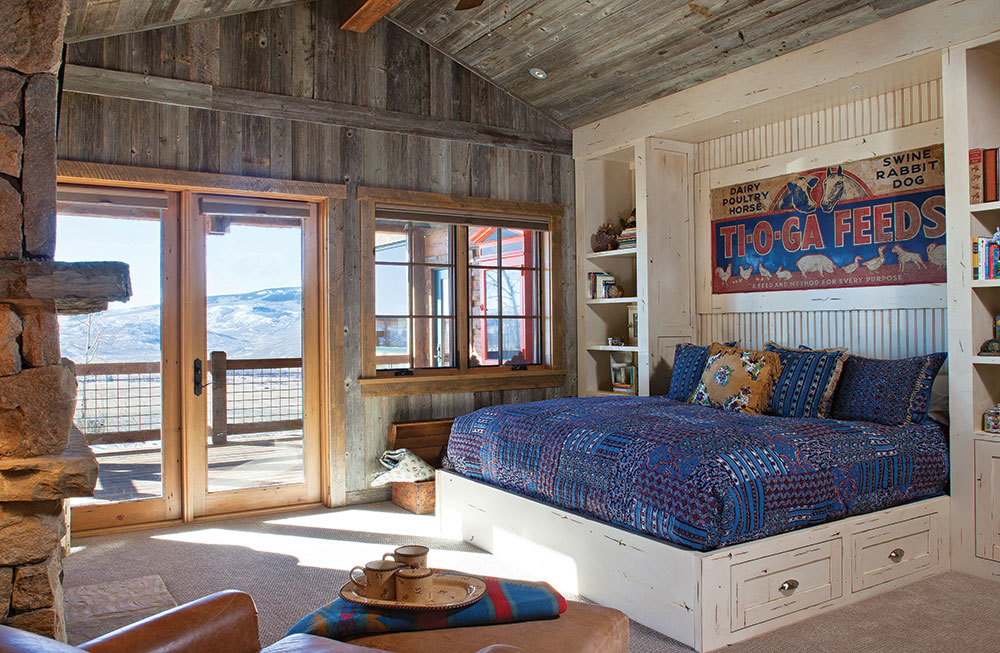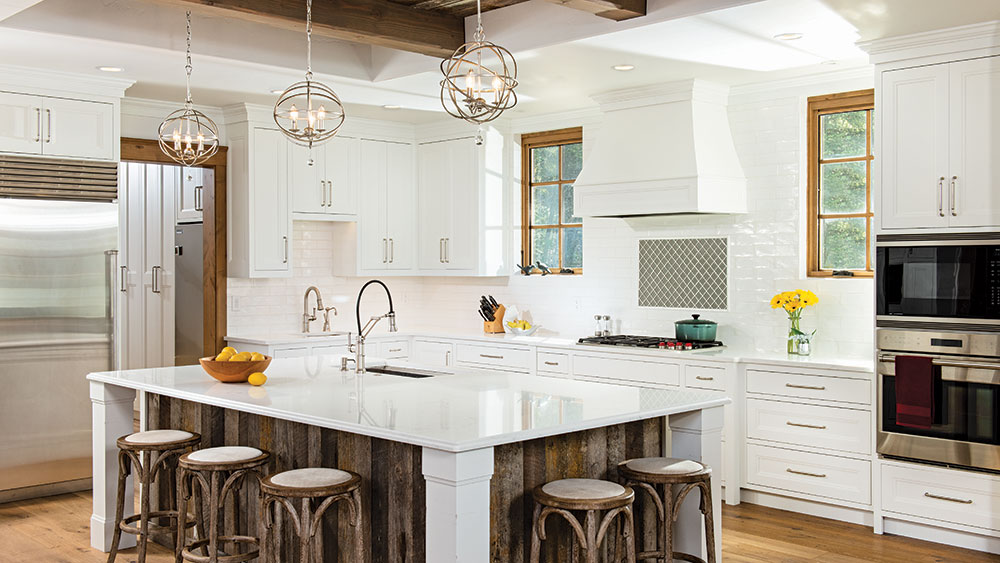(See more of this home
here)
Smaller homes have their
advantages: they’re cozy, they consume less energy and there’s not as much area to clean and maintain. But close quarters can leave homeowners feeling a bit restricted. To make the most of your home’s square footage—and create
unique storage solutions along the way—consider these six design tips that will breathe new life into tight spaces.
1. Build It In
Built-in furniture that complements your timber home can be both beautiful and practical. Window seats below bay windows, for instance, offer additional seating space, while providing a place to stash pillows and blankets when not in use. Built-in bookshelves, cabinets, display niches and media centers, meanwhile, can eliminate the need for stand-alone shelving and free up more premium floor space.
Built-ins also help minimize clutter. How? Instead of letting dozens of shoes and boots pile up on the floor or stacked on the stairs, you could construct a narrow series of shelves for footwear.

2. Expect the Unexpected
Once you start building, you’ll often find hidden, usable areas that you didn’t notice when you were drawing the plans. With their sloping rooflines, lofts and upper floors are ideal candidates for unique space-saving solutions. Install built-in drawers and cabinets at the base of walls and within dormers—areas that otherwise wouldn’t be used for anything.
3. Create an Open Door Policy
There are certain locations in smaller homes where pocket doors can really save space, such as getting in and out of small bathrooms. These sliding doors make the wall space more usable than a swinging door, which sometimes isn’t practical, especially if you have a bed or chest of drawers that might be in the way. Even though pocket doors certainly have their place, some design experts caution about their long-term maintenance requirements.
They’re a good option if a traditional door would be cumbersome or fold back the wrong way, but because of the tracks and sliding mechanisms, pocket doors can become an issue over time. Luckily, if you consider yourself a handyman (or woman), problems can be avoided with proper upkeep.
See Also: 3 Small-Home Solutions
4. Don’t Cut Corners
In the kitchen, you’ll want to eliminate dead space where cabinets come together at 90 degrees. Appliance garages, which are tucked beneath the upper wall cabinets where the corners meet, are an ideal way to use this area to your advantage. By concealing the toaster, blender or coffeepot in these compartments, you’ll free up counter space and keep your kitchen looking tidier. Additionally, some cabinet manufacturers have developed styles that come complete with exposed shelves built into the end unit. This creates a space for culinary supplies, cookbooks, decorative bowls—even a small TV.
5. Island Time
An island is truly the workhorse of the kitchen—and we’re not just talking about the oversized kind. Even the smallest islands make a big impact. Fulfilling such varied roles as spots for food-prep, cooking and cleanup, islands also accommodate casual family meals, homework or bill paying. By maximizing your kitchen island, you’ll find even better use for the perimeter countertops. Some homeowners will even move the sink area and dishwasher into the island, which frees up wall space and offers a continuous run of countertop in the rest of the kitchen.
6. Look Out Below
The area underneath staircases is often underutilized, but it offers plenty of opportunities for space invention. We like stairwell space for recessed entertainment systems, bookcases and storage shelves—and we even like a chest of drawers there. If you don’t have room for big pieces of furniture, the stairwell offers valuable storage space.
Other unique under-stair ideas include creating an area to accommodate a playhouse, a reading nook, a home office or command center and wine storage.














